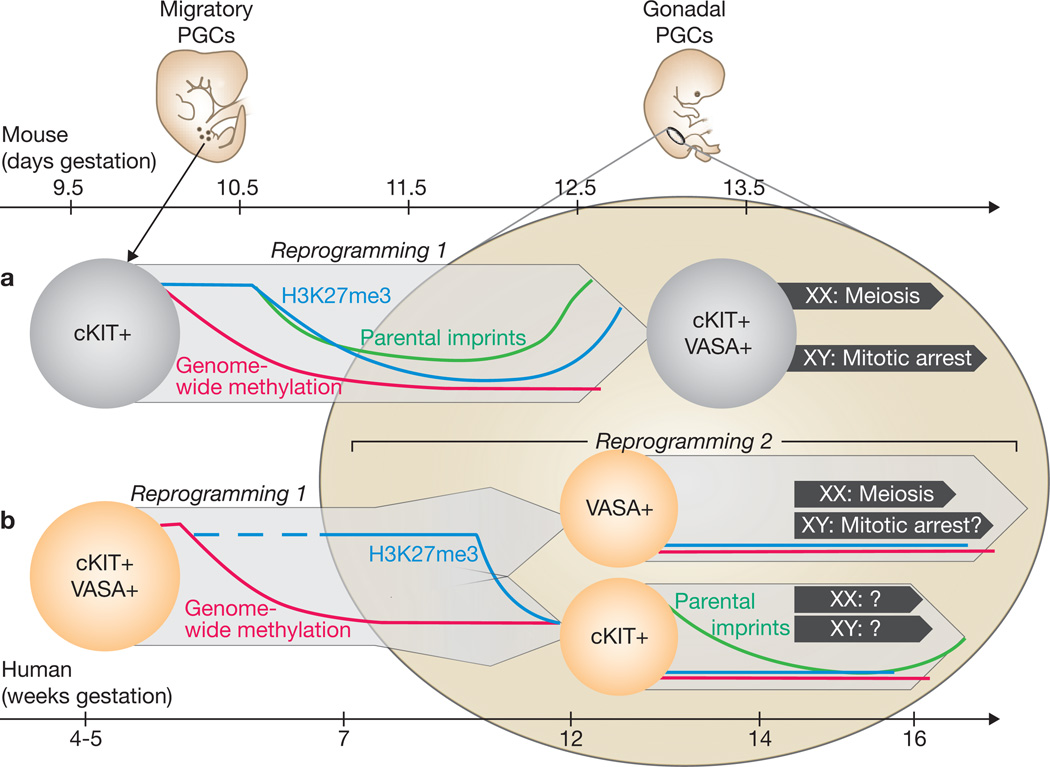Figure 1.
Comparison of models of PGC development in mice and humans. (a) Mouse PGCs (light grey) seem to remain as a single population that upregulates late markers such as VASA upon colonizing the gonad at around stage E11. Epigenetic reprogramming in mouse PGCs occurs over approximately 3 days during late migration and early gonad colonization. (b) Human PGCs (light orange) exist as a single population during migration that bifurcates into cKIT+ and VASA+ lineages at 11–12 weeks, more than 1 month after reaching the gonad. Although VASA+ PGCs enter meiosis in the fetal ovary, the fate of cKIT+ PGCs remains unclear. Epigenetic reprogramming in human PGCs probably occurs as an early wave of genome-wide demethylation (red) and a later wave of demethylation of imprinted loci (green) and depletion of H3K27me3 (blue).

